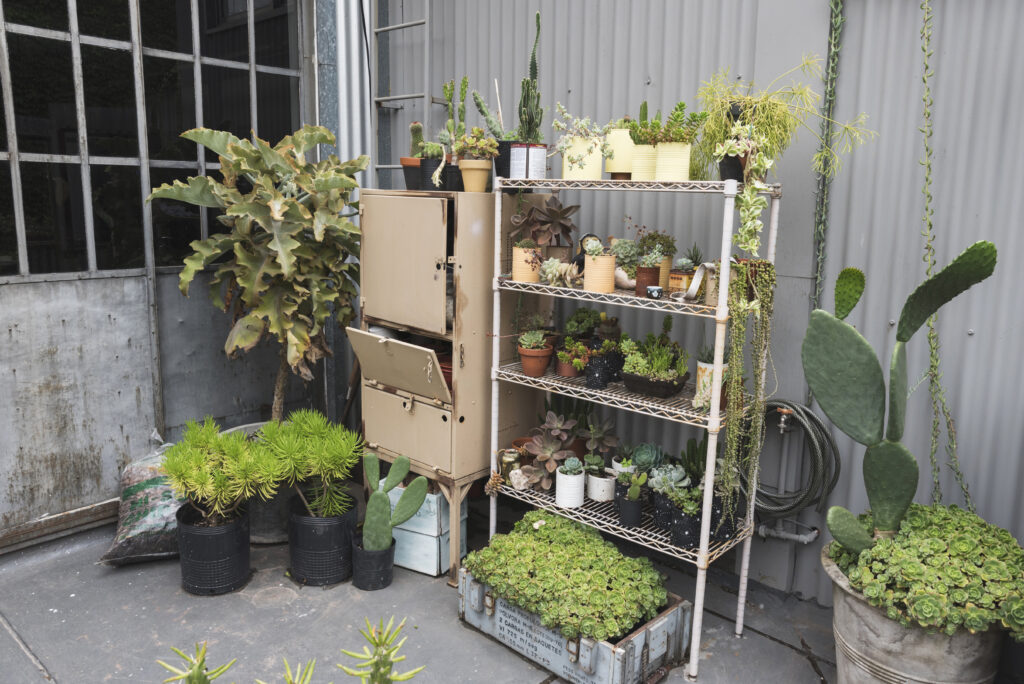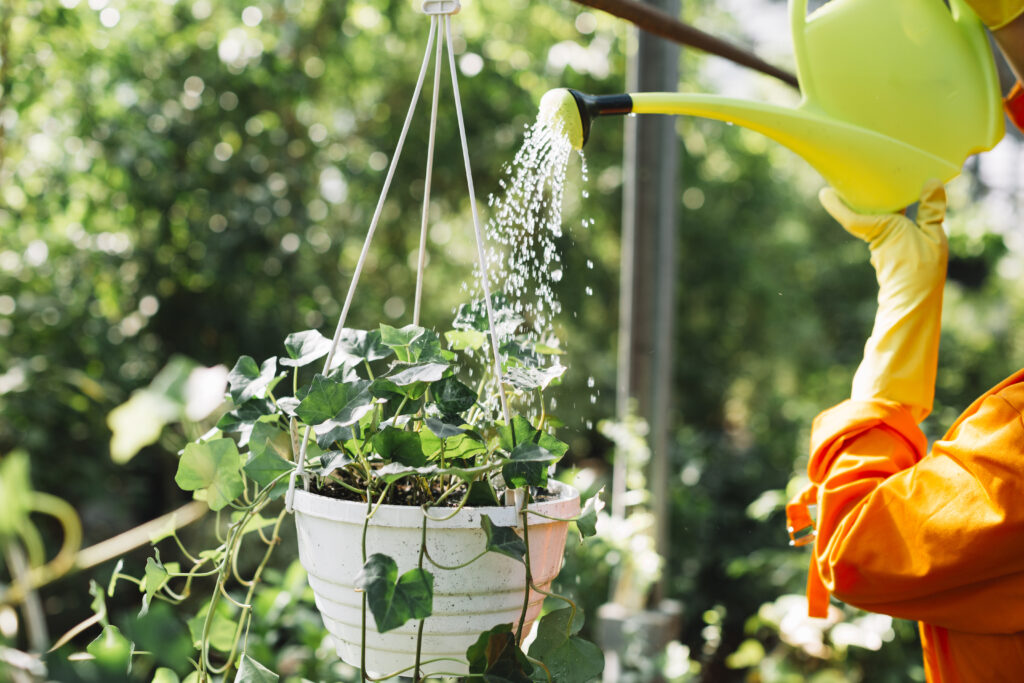What is vertical gardening?
Vertical gardening is the practice of growing plants vertically rather than horizontally. It’s a creative choice for folks with little outside space, such as city dwellers or apartment owners. Instead of traditional garden territory, plants are grown on structures such as fences, walls, trellises, and stacked pots. Vertical planting can be as simple as hanging plants onto a balcony railing or as complex as massive green walls above buildings. This strategy not only saves space but also adds a unique look to your home’s environment.
What Are the Advantages of Vertical Gardening?
- Maximizing Space: Vertical gardening offers the advantage of maximizing available space. This is particularly beneficial in crowded urban environments where space is at a premium. Vertical plant growth enables the creation of a vibrant garden in compact areas such as a small apartment balcony or a narrow backyard.
- Enhances Air Purity: Plants function as natural air cleaners. In a vertical garden, a greater quantity of plants can aid in removing contaminants from the air, promoting a healthier indoor or outdoor environment.
- Reduces Pest Problems: Growing plants in a vertical manner can lower the likelihood of pest and disease issues. Elevating the plants above the ground makes it more challenging for typical garden pests to access them. Additionally, the enhanced air circulation aids in preventing fungal diseases.
- Enhances the visual appeal: Vertical gardens give unique and appealing aspects to the place you live. Vertically oriented gardens, whether it is a wall of lush greenery in the living room or an array of flowers on a balcony, offer the power to transform ordinary areas into living art.
- Easier Maintenance: Vertical gardens are often easier to maintain than typical gardens. Watering, pruning, or harvesting plants from an elevated location removes the need to bend down. This makes it easier to access, especially for people with physical limitations.
- All-Year Gardening: Vertical gardening offers you greater influence over your growing environment all year round. The plants could be cultivated indoors or in covered courtyards, enabling you to garden all year, regardless of the weather.
- Better Yield: Since vertical gardens make good use of space, you can frequently produce more vegetation in a smaller area, which gives you higher yields, especially for smaller fruits, vegetables, and herbs.
Is Vertical Gardening Economical?
A vertical garden can be very affordable, in particular when compared to normal planting methods. Here’s why.
- Low Start-Up Costs: There is no need to put money into large areas of land or expensive landscaping materials. Many vertical planting structures can be built using recycled materials such as pallets of wood, old containers, and plastic bottles.
- Efficient Resource Use: Vertical gardens often demand less water than typical gardens since gravity helps circulate water more evenly. You can also build drip irrigation systems to minimize water waste.
- Less fertilizer and soil: Vertical plantings need fewer fertilizers and soil, minimizing the need for a great deal of soil-related amendments. In addition, the small planting area enables the targeted treatment of a smaller amount of soil with compost and nutrients.
- Energy Savings: The indoor vertical gardens may aid in insulating your home, lowering energy bills. Green walls can function as natural barriers, keeping your residence cool during the summer while remaining cozy in the winter.
- Grow Your Food: Growing herbs, vegetables, and fruits vertically helps you spend less money on grocery shopping. Fresh, home-grown produce tends to be more nutritious and cheaper than store-bought alternatives.
- Durability and longevity: When properly set up, vertical garden systems can last for years with little upkeep. This makes it a wise decision that will pay off over time.
What Plants Grow Well in Vertical Gardening?
Choosing the right plants is important for the longevity of your vertical landscaping. These are a few plants that prosper in vertical garden systems.
- Herbs: Herbs such as basil, mint, black pepper, thyme, parsley, and coriander are ideal for vertical gardens. They require little space, are easy to cultivate, and can be harvested frequently.
- Vegetables: Many tiny veggies are perfect for vertical planting. Think about growing cucumbers, tomatoes, peppers, lettuce, or spinach. Climbing crops, such as beans and peas, grow especially well atop trellises or support systems.
- Flowers: Petunias, marigolds, pansies, and nasturtiums are great options for integrating colour into a vertical garden. These flowers thrive in containers and might brighten up any room.
- Foliage Plants: Ferns, ivy, pothos, and philodendrons are great for creating rich green walls. These plants need little maintenance and will thrive in a variety of lighting conditions, making them suitable for both indoor and outdoor vertical gardens.
- Succulents: Vertical gardens benefit enormously from succulents such as aloe vera, echeveria, and sedum. They require very little moisture, making them simple to maintain, and their distinct shapes add visual variety to your garden.
- Climbers and Vines: Plants like morning glory, clematis, and bougainvillaea are ideal for vertical settings. These grow quickly and may cover a huge area, making them ideal for building a green wall or segregating areas of your garden.
How Do You Make a Vertical Garden?
Here’s a step-by-step guide to creating your vertical garden
Select a Location

Choose an area with good sunlight and easy access to water. Indoor gardens require enough sunlight, whether it is natural or artificial.
Choose a structure
Determine the sort of vertical garden design that best suits your space. Options include:
Wall-mounted planters: Ideal for small spaces such as balconies and kitchens.
Hanging pots: Great for hanging plants from ceilings or fences.
Trellises: Good for climbing plants.
DIY Options: Use pallets, old shelves, or repurposed containers.
Prepare the Soil
Choose a lightweight, well-drained soil composition. The majority of plants flourish on a mix of garden soil, fertilizer, and coco peat. Ensuring that the soil is nutrient-rich and ideal for the kinds of plants you’ve chosen.
Arranging Your Vertical Garden
Organize the Plants: Before planting, set up your plants to find the optimal layout. Position bigger or climbing plants towards the bottom and smaller or trailing plants towards the top.
Planting Method: Create small holes in your containers or planters, position the plants inside, and softly compact the soil around them. Water right away to assist the plants in settling.
Watering and Maintenance

Water and Care: To ensure proper irrigation, it is important to regularly water vertical gardens as they tend to dry out quickly. Using drip irrigation systems or self-watering planters can simplify this task.
Trimming and Feeding: It’s important to regularly trim your plants to promote growth and prevent overcrowding. You should fertilize every few weeks with a balanced fertilizer or compost tea.Pest Management: Keep an eye out for pests and diseases and employ organic methods such as neem oil or companion planting to deter pests.
Observing and Making Changes
Stay vigilant about the development of your garden. If some plants are not doing well, think about changing their location or swapping them for more appropriate choices. Rotate plants as necessary to guarantee even distribution of sunlight.
Take pleasure in your vertical garden
After setting up your vertical garden, make sure to take some time to appreciate it. Whether it’s for visual appeal, homegrown produce, or improved air quality, your vertical garden will be a beneficial enhancement to your surroundings.
Conclusion
Vertical gardening offers a space-saving, cost-effective, and visually appealing method to integrate plants into your home or garden. With a clear understanding of its requirements, awareness of its advantages, and careful selection of plants and materials, you can establish a flourishing vertical garden that improves your living environment. Whether you are cultivating herbs for culinary use, flowers for aesthetic appeal, or vegetables for sustenance, vertical gardening provides limitless opportunities for gardeners at any skill level.



Pingback: How to Build a Kitchen Garden for Fresh, Homegrown Produce - Organic Kokan
Pingback: How to Grow Tomatoes on Your Balcony - Organic Kokan